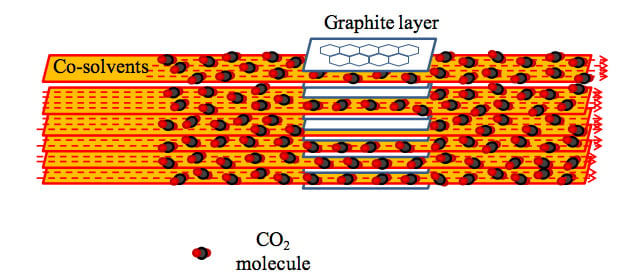
Extract
Supercritical carbon dioxide is used to exfoliate graphite, producing a small, several-layer graphitic flake. The supercritical conditions of 2000, 2500, and 3000 psi and temperatures of 40°, 50°, and 60°C, have been used to study the effect of critical density on the sizes and zeta potentials of the treated flakes. Photon Correlation Spectroscopy (PCS), Brunauer-Emmett-Teller (BET) surface area measurement, field emission scanning electron microscopy (FE-SEM), and atomic force microscopy (AFM) are used to observe the features of the flakes.
Wattanaprayoon, Chaiyaporn, “Graphite exfoliation by supercritical carbon dioxide extraction”, Master’s Thesis, Michigan Technological University, 2011.